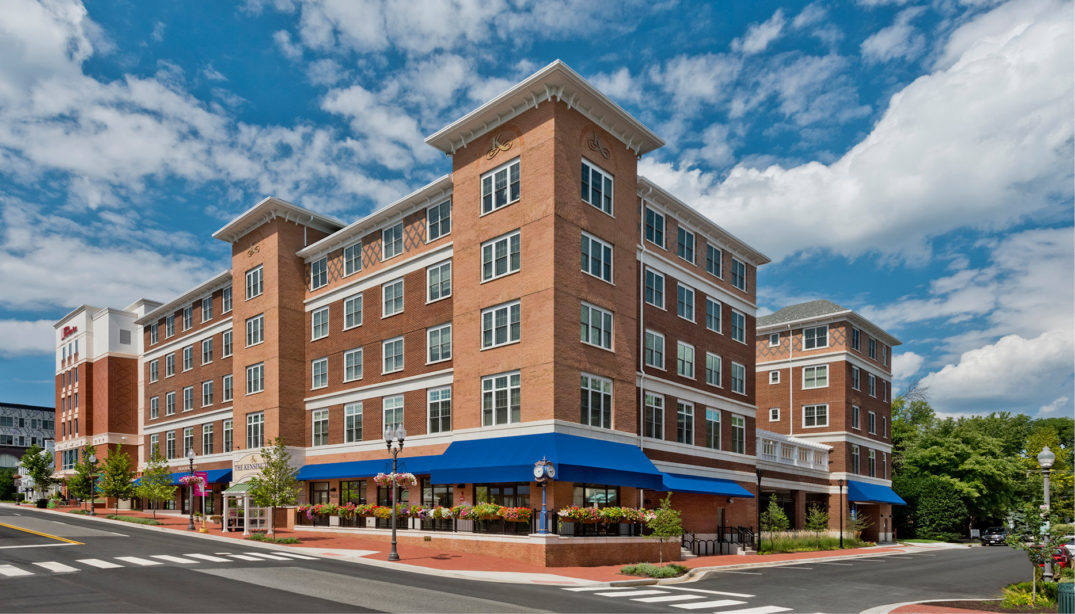Designed to integrate, urban-set senior living facilities upend public misconceptions
Part 1 of our 3-part series

It’s a morbid analogy: Yesterday’s senior living facilities, flat and sprawling, pressed to the outskirts of towns and cities, “like being retired to pastures,” says Steve Ruiz, sector leader for senior living.
“Zoning boards tend to want to put seniors at the fringe of the community,” explains Harley Cook, a real estate developer with 25 years’ worth of experience. Instead, “To have innovative communities—multi-generational communities—that’s more natural,” he adds. “I think it’s very important, especially for young people to grow up with elderly, rather than having them isolated.”
It’s also better for seniors, experts say—especially those who are accustomed to living in urban and downtown settings. In suburban- and rural-set facilities, with little or no access to retail gathering points and community spaces, older individuals (many of whom no longer drive) face a difficult time remaining active and social, says Kenzie Latham Mintus, Ph.D., a faculty member, researcher and advisor for medical sociology at Indiana University–Purdue University Indianapolis. Worse yet, she adds, those locations make them less likely to be visited. In those cases, “People who want to visit and interact with older adults, they have to go outside of their normal patterns,” she explains. “Unfortunately, folks don’t visit, or they’re gone in an hour or less,” Ruiz adds. “It doesn’t work.”
While you might expect those dilemmas to be the focus of people like Mintus, you might not expect them to be the focus of architects. But upending the public’s perceptions of urban-set senior living and age-wide integration of society has become a cornerstone of Ruiz’s work. By designing high-end living facilities for aging populations as urban infill projects—in mainstream, urban settings—Ruiz and other designers at Moseley Architects are not only keeping city-dwelling seniors in their preferred places, but they’re pressing society in a new direction. In the meantime, their designs are overcoming public perceptions about how older generations interact with and contribute to local economies. In the end, even the harshest opposers and critics of the concept admit: They’re onto something.
“When it was being approved, it was a little controversial to put assisted living right on Broad Street, which is our main street through town,” says Sally Cole, director of the Falls Church Chamber of Commerce in Falls Church, Va. Among other residents and businesses, there was some resistance, Cole admits. Meanwhile, “Everyone I know who was concerned has really changed their tunes, because it’s become such a vibrant area and part of the community,” she says, speaking of The Kensington at Falls Church, one of Ruiz’s projects. “It’s been much better and more successful—and exciting—than anybody imagined.”